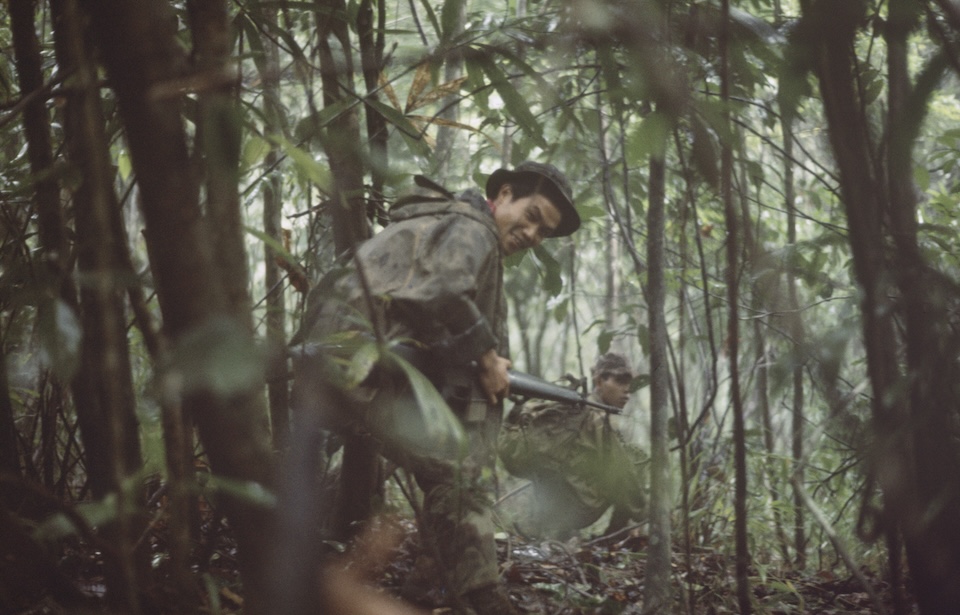The conditions on the battlefield played a huge role in how the Vietnam War was fought. U.S. troops didn’t just face enemy fire—they had to survive the jungle itself. Thick undergrowth, extreme heat, and the constant threat of ambush made every mission risky.
But it wasn’t just combat that made life difficult. Mosquitoes carrying malaria were a constant danger. The nonstop dampness led to problems like trench foot and painful fungal infections. Drinking untreated water often caused stomach bugs and other illnesses that could take a soldier out of action for days.
All of this took a heavy toll, wearing soldiers down both physically and mentally—and making an already grueling war even harder to fight.
Venomous snakes
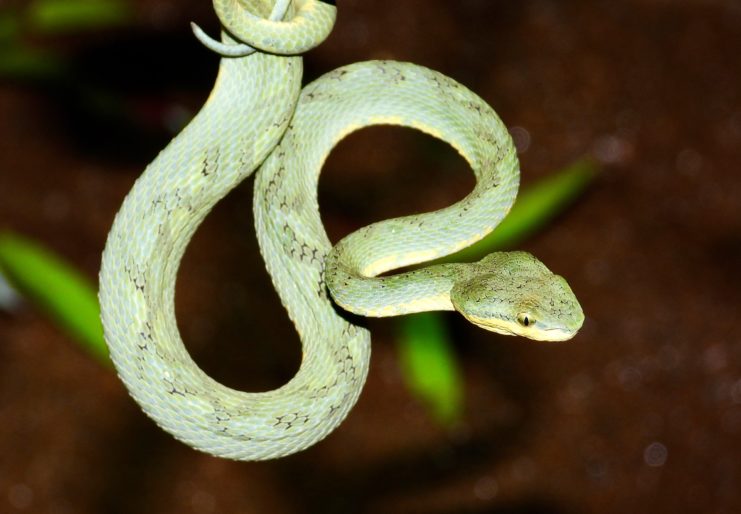
Venomous snakes were some of the most dangerous animals in the jungles of Vietnam. According to the U.S. National Archives, around 25 to 50 American soldiers were bitten by snakes each year during the Vietnam War. Not all jungle snakes were venomous, but two types were especially common—and soldiers did their best to avoid them.
One was the yellow-bellied bamboo pit viper, which U.S. troops nicknamed the “two stepper” because its powerful venom could cause someone to collapse after just a few steps. While it usually took longer than that for the venom to be deadly, the snake was still extremely dangerous.
The Viet Cong even used these snakes as deadly traps, hanging them from tunnel ceilings. If a soldier entered the tunnel looking for enemies or explosives, a trigger would release the snake, dropping it right onto the soldier’s head.
Another frequent threat was the king cobra, one of the world’s largest venomous snakes, growing up to 13 feet long. Troops came across them in the jungle, rice fields, latrines, and even curled up on helicopter seats.
Dale Vaughn, a door gunner with the 114th Assault Helicopter Company, 1st Aviation Battalion, once found a young cobra and decided to keep it as a pet. He named it “O” because of the white circle on the back of its head and kept it in a cooler under his cot.
Aggressive insects
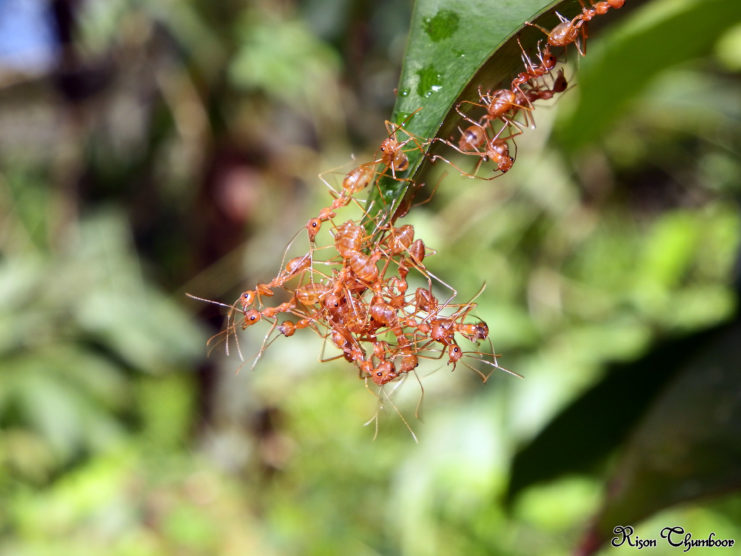
American soldiers in Vietnam faced constant challenges from the jungle’s wildlife, including aggressive weaver ants, which they nicknamed “Communist ants” because of their red color and fierce attacks. A single misstep could disturb these insects, triggering a rapid and coordinated assault. Even though the Army used insect repellent, it often had little effect. While their bites weren’t venomous, they caused sharp, burning pain.
Troops also had to be on guard against the Vietnamese centipede, a creature that could grow up to eight inches long. Its bite was extremely painful and, in some cases, even life-threatening. Along with scorpions and venomous spiders, these centipedes were among the most dangerous creatures lurking in the dense jungle.
Man-eating wildlife
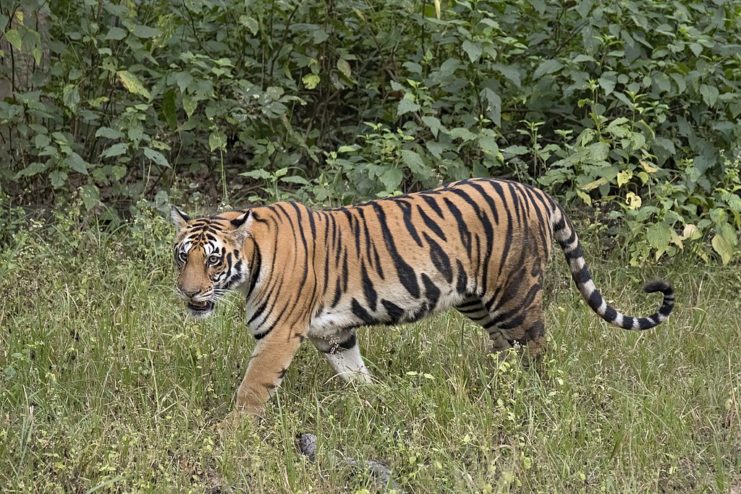
Tigers, crocodiles, and elephants—oh my! In the jungles of Vietnam, danger lurks far beyond the plants and elusive insects. Crocodiles silently wait in the water, while elephants can charge without warning.
On December 22, 1968, a massive tiger stalked a team from the 3rd Marine Recon Battalion during a routine patrol. As the six-man team prepared to be extracted by helicopter, worsening weather forced them to spend the night in the jungle. While two stood watch, the remaining four went to sleep. That’s when the tiger struck, targeting one of the Marines.
PFC Roy Regan, who had been sleeping next to the attacked Marine, later recalled, “I jumped up and saw the tiger with his mouth around my partner. All I could think about was to get the tiger away from him. I jumped at the tiger and the cat jerked his head and jumped into a bomb crater ten meters away, still holding his prey.”
The team quickly responded, firing their weapons at the predator, which finally released its grip, allowing the injured Marine to crawl out of the crater. When the helicopter arrived the next morning, it found a wounded Marine, five others, and a dead tiger.
Killer plants
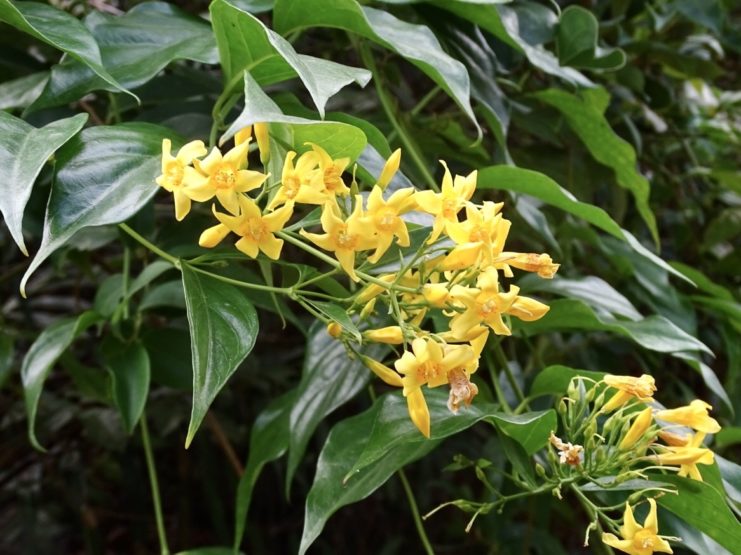
Navigating the thick and tangled brush of the Vietnam jungle could mean life or death for some soldiers. The hostile environment was a maze of dangerous animals, hidden assassins and plants that could maim or even kill. Heartbreak grass, or gelsemium, is an unassuming but poisonous plant that claimed many lives.
The plant contains a compound similar to strychnine and its effects can be felt almost immediately, eventually leading to death by asphyxiation. Despite its killer reputation, accidentally ingesting heartbreak grass occurs quite regularly and has been in the news over the last few years in relation to the suspicious death of a Russian whistleblower in 2012.
Stories of the “wait-a-minute” vine, or rattan plant, were also prolific among soldiers trudging through the Vietnam jungle. Tim Lickness, who arrived in Vietnam in 1968 with the 101st Airborne Division, described the vine’s ability to “grab you” and “suspend you in the air.”
Wait-a-minute vines come from a plant that grows long cable-like arms that easily hook onto and even tear skin and clothing, eventually wrapping you in an inescapable net. While these plants were only encountered off trails, many units decided to risk trudging through them to avoid trip wires, since the vines made it impossible to set traps.
Another plant known as elephant grass was so sharp, it would leave painful cuts on soldiers’ skin. The razor-sharp plant is practically impenetrable – we can only imagine the dread one would feel when a patch of elephant grass crosses their path.
Veit Cong tunnels
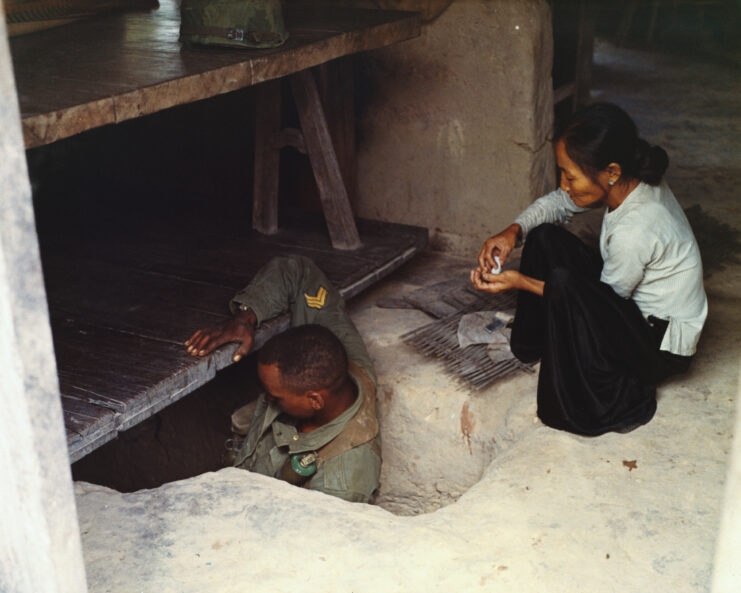
The Viet Cong had a major edge in Vietnam’s dense jungles thanks to their secret tunnels systems. These tunnels weren’t just shortcuts—they were fully developed networks originally created during the fight against French rule. They stretched for miles and included hospitals, supply rooms, sleeping quarters, and even kitchens. With fresh air vents, food, and water, fighters could stay underground for days without being found.
While U.S. troops had to hack through thick jungle on foot, the Viet Cong used the tunnels to move quickly, stay hidden, and launch surprise attacks.
American forces tried to destroy these tunnels with bombs, water, and gas, but the designs were too smart to be wiped out easily. Eventually, the U.S. sent in “tunnel rats”—soldiers who crawled through the tight spaces with just a flashlight and a gun. It was one of the most dangerous jobs of the war, since the tunnels were filled with traps, gas, hidden explosives, and even snakes set loose to stop intruders.
Viet Cong traps
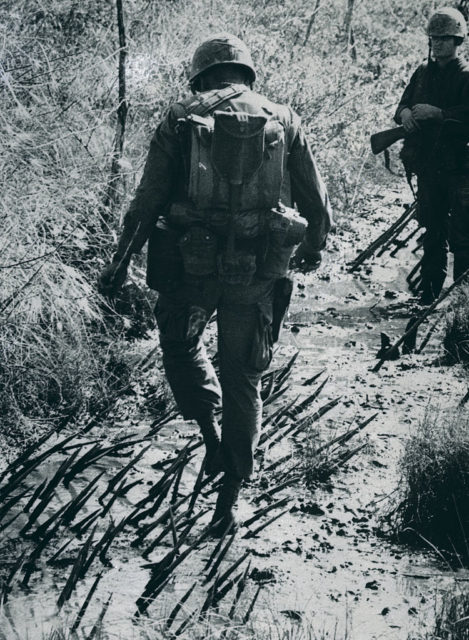
As if the Vietnam jungle wasn’t enough for US soldiers to contend with, they also had to be on the lookout for traps laid by the Viet Cong. The aim of these was to maim, not kill, American soldiers, as it forced an entire unit to slow down while aid was applied. Not only did they cause physical injury, they also had a psychological effect, reducing morale.
Among the most notable traps deployed by the Viet Cong were Punji sticks, which were sharpened bamboo stakes that stuck out of the ground and were covered in either feces, urine or poison. This ensured that those who encountered them not only suffered a cut from their sharp points, but also an infection that kept them out of commission.
The swinging mace was also another formidable trap. Triggered by a tripwire, it was a heavy clay ball covered in spikes, which would cause serious injury to the upper portion of a soldier’s body. It was similar to the bamboo whip, a pole with spikes attached to it. When triggered, the trap could travel up to 100 MPH, inflicting a lot of pain.
More from us: John McCain Survived Being Imprisoned By the North Vietnamese for Over Five Years
A final noteworthy trap deployed by the Viet Cong was the the rudimentary grenade-in-a-can. As its name suggests, it was made up of an active grenade placed within a can. Depending on the location, this type of trap was made up of one or two grenades, with the latter connected by a tripwire.
